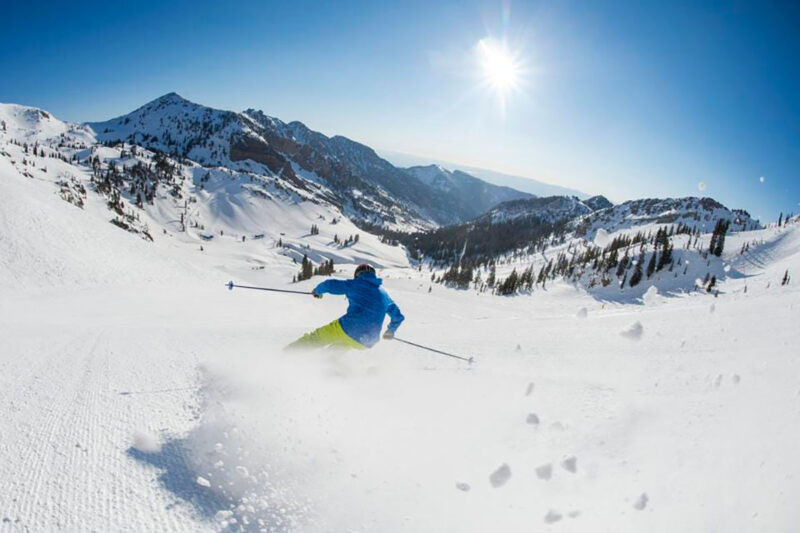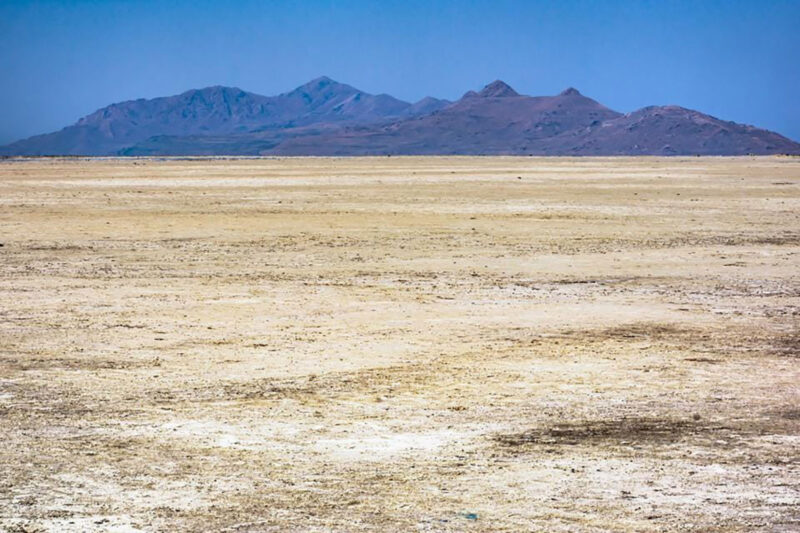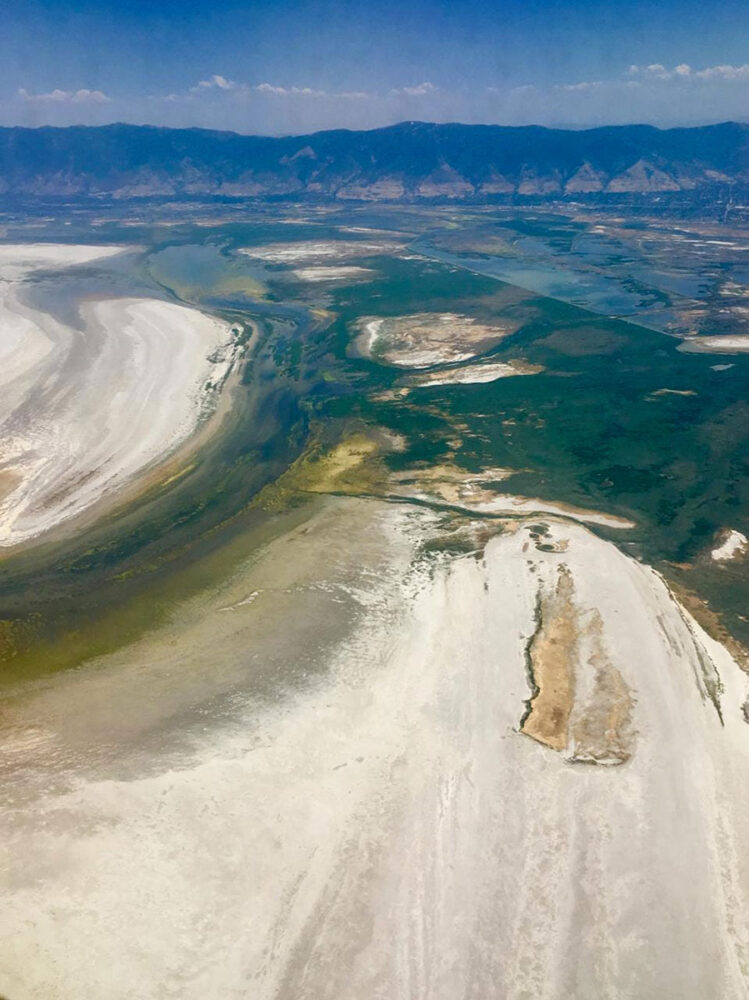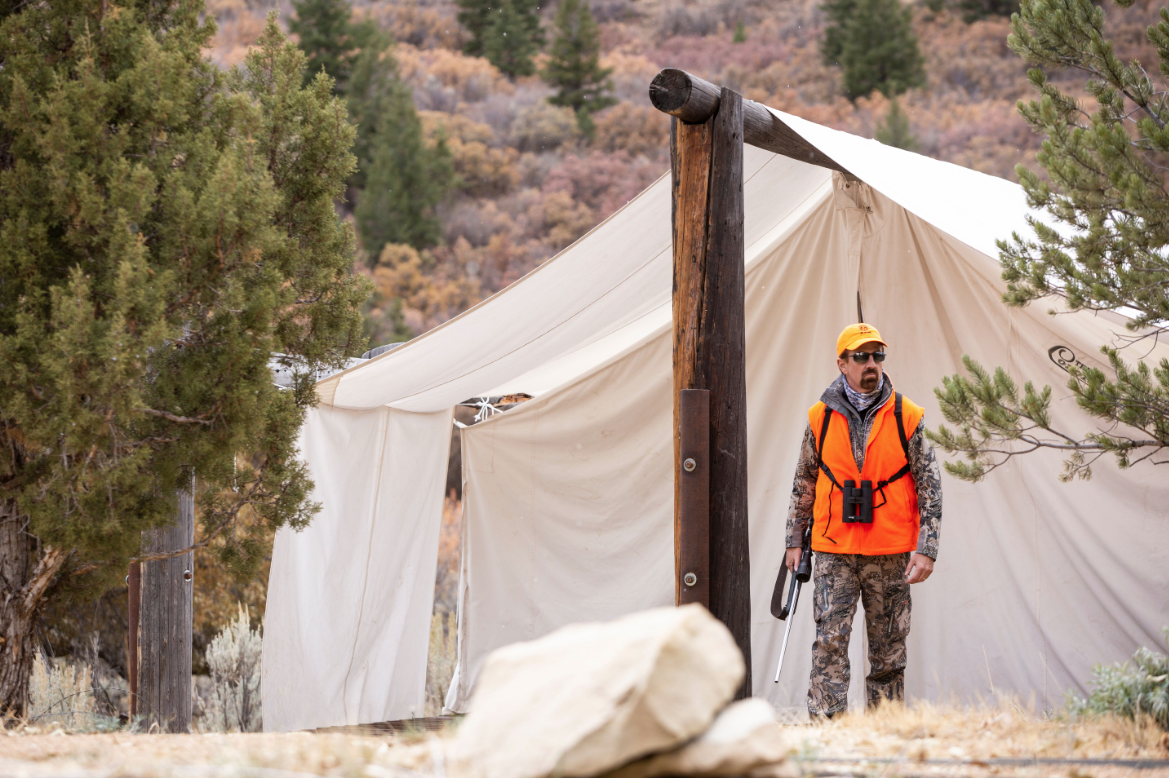The loss of the Great Salt Lake would lead to an ecological and economic catastrophe the likes of which America has not seen since the Dust Bowl.

The Great Salt Lake contributes significantly to the region’s snow production, driving Utah’s billion dollar ski industry. Experts fear that as the lake continues to shrink, so too will the state’s legendary powder. GETTY
Utah is a state blessed with more than its share of natural wonders and beauty, and residents and visitors are never far from one of its five stunning national parks — third most in the country. The air and water are clean, it’s the ninth sunniest state in the union, skiers routinely rank Utah’s snow among the best on the continent (averaging some 500 inches of perfect powder annually), cities are safe, schools are among the top in the nation, it has the most robust economy in America, provides high-quality health care and if you want to see the standard for what a Winter Olympics can be put it in Utah.
The state, in a word, works.

As water levels have fallen, more than half of the Great Salt Lake’s lakebed is now exposed. Experts warn that arsenic found in the dirt of the exposed lakebed could, under the right conditions, create toxic dust clouds. GETTY
That’s not by accident. Utah residents have a history of electing problem solvers which has created a firewall against the dystopia that has befallen so many other cities and states where police are demoralized, crime rates are soaring and schools have become social experiments and ideological battlefields. Because of Utah’s booming economy, favorable climate and abundant natural recreation — not-surprisingly — it is the fastest growing state in the country.
That growth, however, has contributed to one of the greatest challenges to ever face Utah — the Great Salt Lake is dying. The largest natural body of water west of the Mississippi is not half the lake it used to be. Experts caution that losing the Great Salt Lake could cost the state $2 billion annually…but it gets worse — far worse. Scientists also warn that a dry lakebed could send clouds of arsenic-laced dust into the air, a natural dirty bomb that could render much of the region uninhabitable.

Utah Governor Spencer Cox and other of the state’s GOP leaders are scrambling to advance solutions to save the Great Salt Lake. GETTY IMAGES
“The Utah legislature has the chance to save Great Salt Lake and we need to act while we still can to reverse the lake’s decline,” says Joel Ferry, legislator and fifth generation farmer and rancher. “If we don’t solve this crisis, our way of life will be imperiled.”
Since Brigham Young and early Latter-day Saint pioneers first arrived at Great Salt Lake, the natural wonder that now spans 1,700-square miles has dropped by roughly 50 percent. The largest saline lake in the Western Hemisphere is in steady decline and may dry up. Some worry that if drastic measures aren’t taken, and implemented, soon the Great Salt Lake may share the fate of other of the world’s vast saltwater bodies — The Dead Sea of Jordan, the Aral Sea of Kazakhstan, The Salton Sea and Owens Lake of California and others.

Visitors to Salt Lake City Airport are greeted with a view of an ever-shrinking Great Salt Lake. GETTY
Over the course of more than a century of documentation, researchers have been able to account for an 11-foot drop in lake levels mostly due to urban development, much of which has occurred in recent decades as Utah’s growth rates have dramatically accelerated. While that may not sound significant when compared to many other lakes, the Great Salt Lake is shallow, averaging just 15-feet, with a maximum depth of only 33-feet. Roughly half the vast lakebed is now exposed. Many experts fear that approved water developments that are currently underway could take the water level down as much as another 10 feet, effectively ending the lake’s very existence.
Beyond the lake as a sustainable economic driver (mineral extraction, brine shrimp harvesting and the snow it generates for ski recreation combining to put $1.3 billion annually into Utah’s coffers), it is one of the most important migratory bird habitats found in the western U.S. The lake is home to most of the wetlands found in Utah and is a federally managed bird refuge. The adjacent 74,000-acre Bear River Migratory Bird Refuge was founded in 1928 and is a key nesting and migratory bird stopover area for millions of ducks, geese, cranes, swans and myriad shorebirds that traverse the Pacific and Central flyways. To put it simply, the loss of the Great Salt Lake would lead to an ecological and economic catastrophe the likes of which America has not seen since the Dust Bowl of the 1930s. Experts warn that Utah would be transformed from the place it is today — one of the most coveted regions to live in America — to a destination where few would reside. The Great Salt Lake is the ecological heartbeat of Utah.

The Great Salt Lake and Bear River Marsh ecosystems are among the most important migratory bird habitats in the western U.S. GETTY
Question is, will efforts of state leaders to resuscitate it be enough?
Editor’s Note: This article originally appeared in Forbes.
 Dorsey has spent the past 30 years investigating and chronicling the finest bird hunting destinations on the planet while producing nearly 60 outdoor adventure television series. In the process, his teams have amassed a library of more than 100,000 hours of HD footage and nearly 150,000 photographs, making Call Time (the book and companion film set) an unmatched celebration of the world of wingshooting.
Dorsey has spent the past 30 years investigating and chronicling the finest bird hunting destinations on the planet while producing nearly 60 outdoor adventure television series. In the process, his teams have amassed a library of more than 100,000 hours of HD footage and nearly 150,000 photographs, making Call Time (the book and companion film set) an unmatched celebration of the world of wingshooting.
The stunning, large-format book chronicles 18 different wingshooting adventures on four continents. Its chapters feature pheasant, bobwhite quail, ruffed grouse, woodcock, greywing francolin, ocellated turkey, spurfowl, sandgrouse, duck, goose, perdiz, dove, and driven shoots for red-legged partridge, guineafowl, pheasants and grouse. Buy Now




